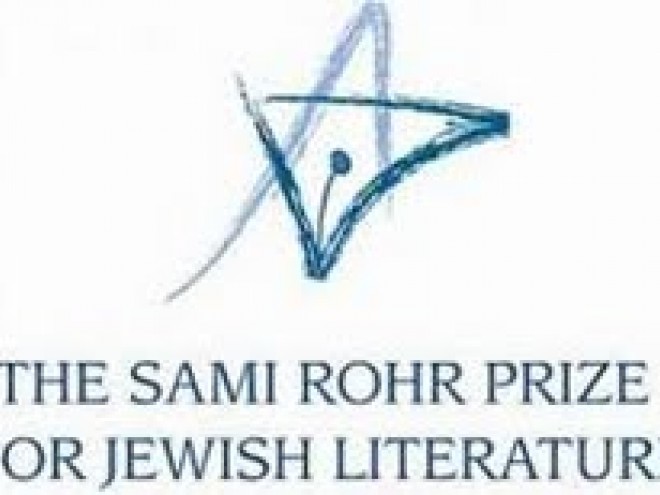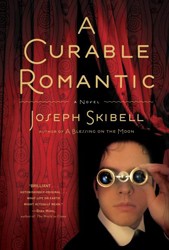A love-song.
Anne Landsman’s novel takes us on a journey through the life of a South African Jewish doctor, seen through the loving eyes of his daughter as he lies in a hospital bed with his family gathered round for the last time.
The metaphor here is the river as life and the need for the strength to row hard and row well to navigate the journey. It’s a metaphor that has been used many times, of course, but the lyrical poetry of the language makes it seem fresh and the streamof- consciousness flow eerily echoes the river’s passage through charted and uncharted territory. The complexities and complications of life, love, and family relationships contrast with the ebb and the flow of the river.
The South African landscape comes alive here, with sights and sounds almost palpable, as does the small slice of Jewish history here portrayed.
Themes flow gently through the narrative. Extinction is one; animals and fish can become extinct but can the love of family? Transportation, too, is a continual theme with boats and trains and planes moving characters from place to place as the journey continues from one generation to the next.
As the mostly gentle narrative flow lulls us a bit, the shocking end is effective and surprising. This is a beautifully written story and a trip worth taking.
Anne Landsman on The Rowing Lesson
My novel, The Rowing Lesson, is Betsy Klein’s bed-side elegy for her dying father, Harry. It’s her attempt to capture the essence of who he was, before she loses him forever. I think most of us are fascinated by who our parents really were. We get snippets of them. And I think we want more, because we can understand ourselves better when we understand them better. And that’s what’s at the heart of Betsy’s journey. It’s her attempt to see her father clearly, so she can come to terms with him. She summons him up and tries to understand him and when she does, she is finally able to understand herself.
I like to think that all kinds of people would be drawn to my work as we all live in families of one kind or another, we all experience the pain of losing a loved one, the joy of seeing a new life come into the world, as well as all the twists and turns in between. I’m intrigued by family ties, how they get stretched, expanded, broken, renewed by circumstance, history, geography. These are universal concerns, not limited to one particular audience. And being a Jewish writer is such a gift because we straddle several traditions, cultures, histories, giving us access to such a wealth of ideas. I’m a South African, Lithuanian, American Jew who grew up speaking fluent Afrikaans (as my second language), loved Shakespeare, Bronte and Dickens, and went to cheder three times a week. All of these strands influence who I am, and how I write, and they connect with people all over the globe.
From the Rohr Judges
The first thing you notice about Anne Landsman’s novel is its challenging form: constantly employing the second person, it feels different from almost anything you’ve read before. But you then realize why she’s made that decision: in telling the story of Betsy Klein, returning to South Africa to her father’s deathbed, it emphasizes how deeply a child can imagine her parent’s life, and how powerful, how invasive an effect it has on her own. And then, realizing this, you can go on to appreciate Landsman’s craftsmanship, her evocative scenes and her sure sense of historical place, to say nothing of her thoughtful meditation on life, death, and the emotions and memories that can bridge the two.
Me’Ah
By Anne Landsman
Novelist Anne Landsman’s quest to locate the essence of the Torah’s holiness led not to simple answers but a deeper understanding of the questions
On Saturday mornings, when the Torah scroll is carried through the aisles of the synagogue, and congregants press forward, tallitot in hand, to kiss the velvet, embroidered cover, there’s a moment of visceral connection. This wordless moment, of honoring and elevating the ancient texts, has always fascinated me. As Jews, we don’t kiss beads, icons, statues or crosses. We kiss words we believe to contain the divine spark. And these words are not printed on paper, they’re inscribed by hand on parchment, and the parchment is rolled around two wooden cylinders. By kissing the Torah, we’re revering not only the words themselves, but the antiquated form in which they appear. We’re honoring both the message and the medium, acknowledging that books were once written differently and read differently. Every time the Torah is uncovered and unrolled, we travel back in time.
This time-travelling, or unraveling, raises a myriad questions: What makes these words holy? When did they first appear? Who wrote them? What is the history of the people who have carried the Torah for three and a half millennia? In September 2007, when I registered for the Me’ah Program, I was attempting to answer some of these questions for myself. Me’ah is a two-year adult education program (or 100 hours of Jewish learning) founded by Hebrew College in 1994 in Boston, now offered at many different synagogues in the Northeast.
The course was divided into four semester- long sections — Bible, Rabbinics, the Medieval Period, and the Modern Period. One of the first notes I took at the beginning of this remarkable journey was in Sharon Keller’s Bible class, about approaching the Biblical text “as if it is alive.” Using the Jewish Study Bible as our guide, our sense of the “Book” as a monolithic, seamless whole was immediately exploded, and what replaced it was a sense of excitement and revelation at the multiplicity of points of view, voices, and time periods contained within the text. Equally thrilling were the different types of interpretation — the comparative approach, the lens of historical criticism, and the methods of source criticism, and feminist criticism. Sometimes these approaches diverged and sometimes they overlapped.
In Rabbinics, with Marcie Lenk at the helm, we explored the system the rabbis created after the destruction of the Second Temple and a new way to live within the same framework was constructed and eventually codified. One of my favorite and rather cryptic notes from this section of the course were the words, “Talmud — reaction to the Gospels?” Also remarkable was the fluidity of the Mishnah, the Palestinian Talmud, the Babylonian Talmud and that the texts were not unchanged until the printing press was invented. Only then did the idea of the authoritative version emerge. With the advent of the digital revolution, one wonders what these texts will look like a hundred years from now.
Benjy Gampel, our fearless medieval period leader, immediately tackled “medieval” as a presentist misnomer, a modern Western European construct that saw antiquity as glorious, followed by the Dark or Middle Ages where the hierarchical church repressed all dissent, finally leading to the Enlightenment and modernity, where the glory of antiquity was recaptured. But from a Jewish perspective, the medieval period is the time period where Jews lived under the rival monotheistic cultures of Christianity and Islam. Before then, they practiced their monotheism in a polytheistic society. Within Christendom, Jews were seen as the direct heirs of the Bible but also as Christ-killers. They could testify to the truth of the Old Testament prophecies, and for that reason were kept alive but in a debased status. They were also seen to be an integral part of the drama of the end of days, when it was understood that Jesus would return and convert them to Christianity as the capstone of his career, the climax of his second coming.
The rise of Islam as a world religion with 80 to 90 percent of world Jewry under its control by the end of the seventh century meant a different set of freedoms and limitations for Jews. Along with Christians, they were classed as “dhimmi” in the Muslim world and the prevailing attitude towards them was toleration, but not equality. Two great reads for this part of Me’ah were A.B. Yehoshua’s Towards the End of the Milennium and The Memoirs of Gluckel of Hameln.
The notion of equality for the Jews came with the enlightenment, and the birth of the modern nation-state. The modern period was taught by Jonathan Gribetz, appropriately the youngest of the four teachers, and the prescribed text was The Jew in the Modern World. As always, each class was filled with revelations, rafts of new learning. The Reform movement began in Germany in 1817 with the New Israelite Temple Association of Hamburg, and not in America, as I had supposed. And again, when it came to the development of Zionism, it became abundantly clear how many different, rival nationalisms existed at that time, and that there were many differing forms of Zionism.
As with the study of the Bible, the picture of Jewish life that emerged was anything but monolithic. In the early years of Zionism, Israel as the homeland of the Jewish people was not a foregone conclusion. Other territories that were discussed were Argentina and Uganda (which was actually Kenya). Some of the foundation documents we studied were the Balfour Declaration, David Ben-Gurion’s “On the Arab Question” (January, 1937), as well as The Palestinian National Charter (July 1968) and we had a particularly lively class discussing the Palestinian denial of Jewish nationhood as well as the Zionist denial of Palestinian nationhood. Jonathan made a deliberate choice not to cover the Holocaust as he rightly felt that it was too large a subject to cover within the limited time.
Ultimately, what I loved most about this two-year adventure into the thickets of Jewish learning was that there were no easy answers, no certitude about whether Moses and Abraham really existed outside of the Torah, no comfortable platitudes about the thorny politics of present-day Israel. As we traveled in time, we tried to look at each generation of Jews as they saw themselves. Now, when I reach forward to kiss the Torah, I realize I’m celebrating my own agency, my desire to connect to the ancient words, as well as to the layered, non-linear history of the Jewish people, and that the spark of the divine rests in that endlessly shifting, restless human search for meaning.
Michal Hoschander Malen is the editor of Jewish Book Council’s young adult and children’s book reviews. A former librarian, she has lectured on topics relating to literacy, run book clubs, and loves to read aloud to her grandchildren.





